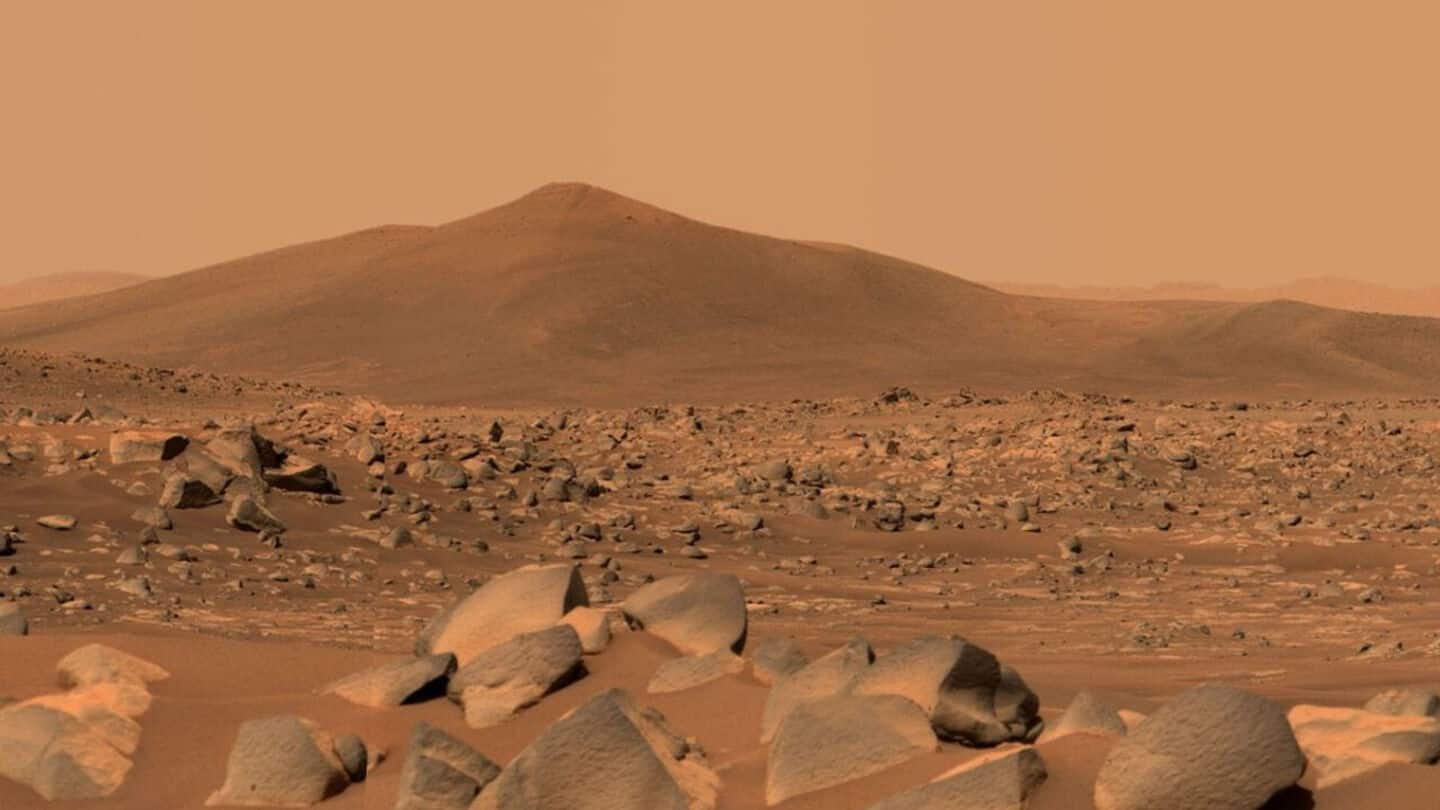
Mars may have been habitable in the past: Study
What's the story
Recent findings from NASA's Perseverance rover have unveiled intriguing aspects of Mars's geology, suggesting that ancient volcanic activity might have created conditions conducive to life.
Researchers, led by Michael Tice from Texas A&M University, have been analyzing rock samples from the Jezero Crater, revealing a complex volcanic history that could have supported microbial life on the Red Planet.
Since 2021, Perseverance has been examining Jezero Crater on Mars, using its mobile lab to aid scientists across the globe.
Research focus
Analyzing Martian rocks for signs of habitability
Tice and his team are studying Martian rocks in a bid to learn about Mars's volcanic and hydrological history.
The team has found two types of mineral-rich volcanic rocks on Mars: a dark variety rich in iron, magnesium, pyroxene, and plagioclase feldspar, and a lighter-toned trachyandesite containing plagioclase crystals and potassium.
These findings point to a diverse and prolonged volcanic activity in the region.
Volcanic activity
Complex volcanic history may have supported life
Using thermodynamic modeling, the research team simulated the formation of these minerals, uncovering processes like fractional crystallization and crustal assimilation.
Such processes are common in Earth's active volcanic systems.
"It suggests that this part of Mars may have had prolonged volcanic activity, which in turn could have provided a sustained source for different compounds used by life," Tice said.
Future research
Anticipation for Mars Sample Return mission
Prolonged volcanic activity on Mars suggests the planet may have hosted life-friendly environments for long stretches. Volcanic heat and chemicals could have formed pockets where microbes might have survived.
Although NASA's Perseverance rover has offered key findings, its tools are limited. Scientists are now pinning hopes on the Mars Sample Return mission, which plans to bring Martian rocks back to Earth.
These samples could offer deeper insight into Mars' ancient habitability and the possibility of life beneath its once-active volcanoes.